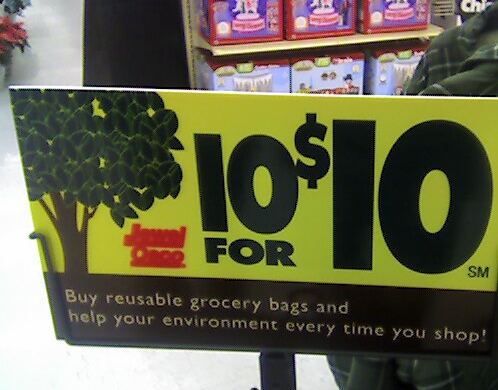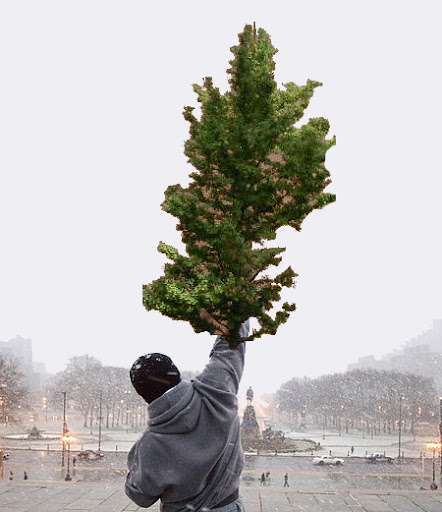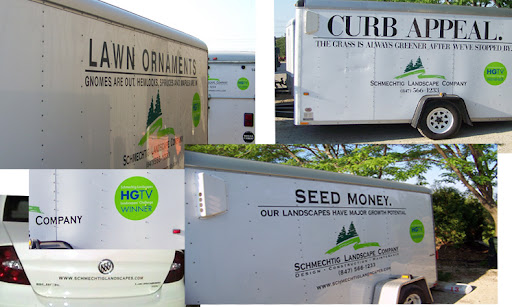Guided and Custom Trips to Costa Rica
A Program of Connors Landscape Design, Inc.
P.O. Box G, Duxbury, MA 02331
Email: info@costaricanaturally.com
Website: www.costaricanaturally.com
The American Academy of Landscape Design offers a selection of intensive 2 and 3-day courses that focus on honing your creative skills with personal design coaching in topics spanning from design theory through construction techniques to business practices and sales. AALD training improves the real-world skills of landscape designers and architects who are serious about building reputations for high-quality residential commissions.
Guided and Custom Trips to Costa Rica
A Program of Connors Landscape Design, Inc.
Website: www.costaricanaturally.com

 ader Joe's encourages us to "Save The World"!
ader Joe's encourages us to "Save The World"! I've been making my way through a book called Selling The Invisible by Harry Beckwith. It's an easy read and easy to pick up and put down too, which is why I nibble at it. The topic is sales in a service industry. Anyway, one of the key concepts is simple: Have something people want to buy. Sounds easy. They may not know they want to buy it yet, but it still needs to be something people will buy and something they will be satisfied with once they have it.
I've been making my way through a book called Selling The Invisible by Harry Beckwith. It's an easy read and easy to pick up and put down too, which is why I nibble at it. The topic is sales in a service industry. Anyway, one of the key concepts is simple: Have something people want to buy. Sounds easy. They may not know they want to buy it yet, but it still needs to be something people will buy and something they will be satisfied with once they have it.
XYZ LandscapingTrees, Shrubs, Flowers, Pavers, Black Dirt, Design
"For the busy professional..."You get the idea. Focus on the benefits, the "What's in it for me." People don't need this stuff, but if you can show them how it will improve their lives, they will WANT it.
"Spaces for the growing family..."
"Extend the enjoyment of your home to the outdoors..."
"Improve you home's value by 15%"
“Enjoy your garden longer with year-round interest!”
 But maybe Ginkgo balboa would have gotten by. I can't really give it a good description. Maybe a picture would help.
But maybe Ginkgo balboa would have gotten by. I can't really give it a good description. Maybe a picture would help. Late to the party as usual, our industry is missing one of the most powerful marketing opportunities in history: The Green Movement! Whether or not you are a "true believer," this is a boat not to be missed. The environment is hot (no global warming jokes please), and your clients want to know what you are doing about it.
Late to the party as usual, our industry is missing one of the most powerful marketing opportunities in history: The Green Movement! Whether or not you are a "true believer," this is a boat not to be missed. The environment is hot (no global warming jokes please), and your clients want to know what you are doing about it.
Here are a few quick examples.
The 'Green Movement' is a BIG thing these days! Of course we, at XYZ Landscape Company have been at it for years.
We decided years ago that the landfills didn't need the grass clippings or leaves that we collect from our clients' properties, so we made a bold move in 19__. That is when we began to use mulching mowers during the times of year when there are no leaves to collect. The benefits to your lawn are well-known (list them), but we are also doing our part for the planet by keeping this "green gold" out of the landfills.
Likewise, when we collect your leaves in the fall, those too are recycled. Through a process of grinding and aerating this "waste" is turned into compost which is returned to the earth in the form of organic fertilizer!
These are just a few of the things we've been doing, long before "green" was cool!In our continuing efforts to help the planet, we are researching less chemical-intensive ways to deal with pests and diseases, as well as ways to conserve fuel. We will keep you posted!
OR
Green is in! Of course we've been green for years. It's the "green industry" after all! We've been into recycling since ____. In our ongoing efforts to do our part for the environment, we thought we'd let our valued clients know that recent research in storm water management has given us some new, eco-friendly options. Namely, these are rain gardens and bioswales. These creatures may not be what you think they are. Essentially, these are potentially attractive methods to deal with storm water on your property, without channeling it directly into storm sewers. Not only do you get an attractive feature in your property, but you also get to do your part to replenish the aquifers. Please contact one of our consultants to find out if your property is a good candidate for this type of feature!
OR
Same pitch, but use it to mention that with every irrigation system our company installs/specifies, we include an electronic rain sensor, which shuts off the system during periods of rain, thus conserving water and saving the planet, yadda, yadda yadda.
OR
In an effort to increase communication with our clients and reduce the amount of paper that ends up in the landfill, XYZ Landscape Company has made the commitment to go to a paperless newsletter. Enclosed is a postage-paid postcard with your name already o it. If you would kindly provide us with your email address, we'll make sure you don't miss an issue! OR A representative from our company will be contacting you in the coming weeks to confirm your email address.

Plant trees!Is there anything new here? Nope. But why not get some added marketing out of things you're doing already?
Now it's your turn.
Please share real-life examples of how the green industry can get greener, and how we can use the green movement to improve or promote our businesses!
 Okay, we're supposed to be creative, right? How come we don't always apply our creativity to our businesses? Here are a few uncommon efforts I hope you'll enjoy. First is from Schmechtig Landscapes. They held a contest among employees to come up with wording for various trailers. Here are some of the results. Pretty cool, huh?
Okay, we're supposed to be creative, right? How come we don't always apply our creativity to our businesses? Here are a few uncommon efforts I hope you'll enjoy. First is from Schmechtig Landscapes. They held a contest among employees to come up with wording for various trailers. Here are some of the results. Pretty cool, huh? Next are the license plates on vehicles at Plant Specialists of Long Island City, NY whose roof garden I toured in 2003 while attending APLD's conference in New York. Very cool. In the same vein, my friend Chris Thomas, owner of The Thomas Company sports "Arboles" on his plate.
Next are the license plates on vehicles at Plant Specialists of Long Island City, NY whose roof garden I toured in 2003 while attending APLD's conference in New York. Very cool. In the same vein, my friend Chris Thomas, owner of The Thomas Company sports "Arboles" on his plate.| Common | Better |
| Landscaper | Landscape contractor, Landscape designer, Landscape architect, Landscape professional, ANYTHING but "landscaper"! |
| Bushes | Shrubs |
| Customer (someone you sell stuff to) | Client (someone you advise) |
| Dirt | Soil |
| Maintenance | Management or Plant Health Care |
| Employee | Team member |
| Sales call/Salesman | Consultation/Consultant |
| Decoration or "For interest" | Use design language, not "decorating" language |




 client. In the course of small talk, she asks, "So how's the gardening business?"
client. In the course of small talk, she asks, "So how's the gardening business?" Put yourself in the shoes of someone not in our industry. What image does the term "landscaper" conjure up? Perhaps that is the image you want. For me, no.
Put yourself in the shoes of someone not in our industry. What image does the term "landscaper" conjure up? Perhaps that is the image you want. For me, no.
 I guess 2007 has been a good year for PR opportunities!
I guess 2007 has been a good year for PR opportunities!For me, and I think for many experienced designers, it's not a linear
thing. A lot of ideas, impulses and strategies occur simultaneously.
But what if they don't? Where, then, do you begin? And how do you teach
someone else where he/she should begin?
Next time you hit a dead end, try this. Find all the lines inherent
in the architecture: doors, windows, corners. Extend them with thin
lines into the landscape creating a Mondrianesque grid. Now see if
you can work within that framework. If you have important views from/
through the house, the place for a focal point will be shouting at you.
Any lines you place on the ground plane that relate to the grid will
automatically relate to the architecture. Then work from there.
Okay, it's pretty basic, but it's a start. Compare it to learning to
write. Remember the outline with Roman numeral I at the top? The grid
strategy is taking the design process down to its very basics. It's
not the end though. If you don't develop that outline into a cohesive
piece, with introduction, three examples and a conclusion, you most
certainly won't get that "A."
So, where do I start? It depends on how quickly something comes to
me. However, the end result can be deconstructed to find Roman
numeral I. That is, even if it doesn't start with an outline
or a grid, the end result still contains the structure I would have
had it begun that way. Make sense?
I welcome your comments.
